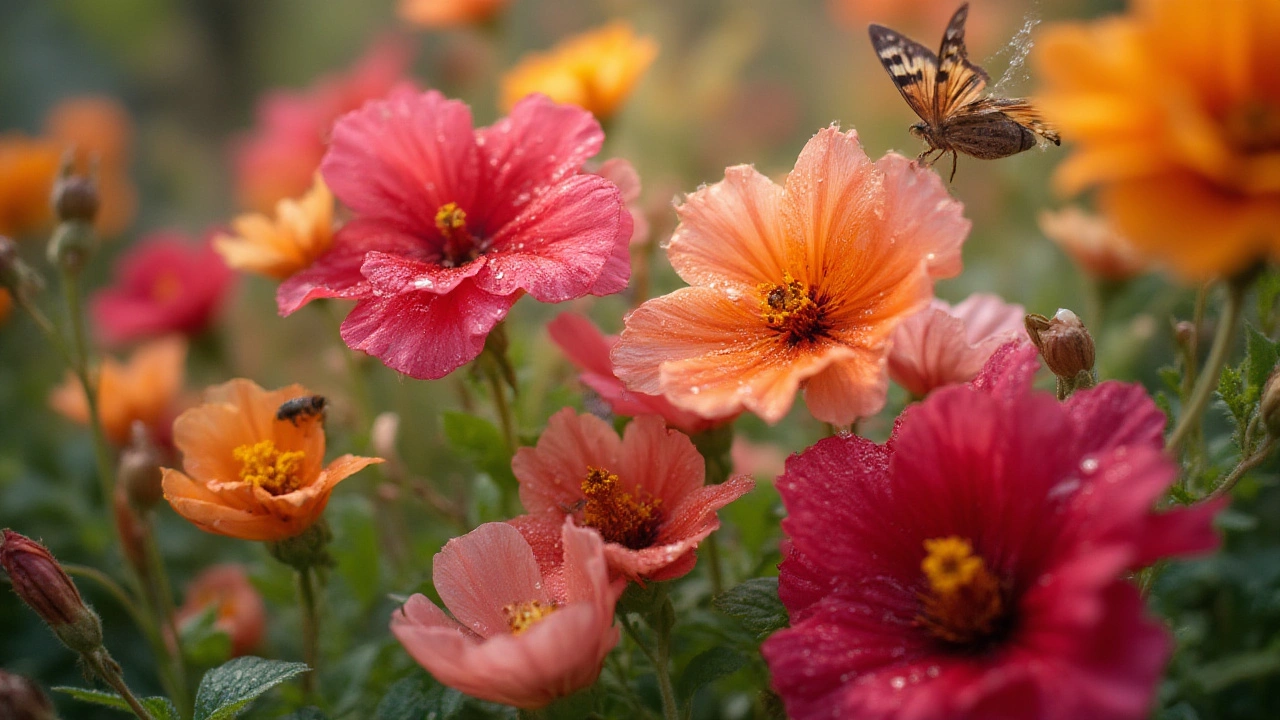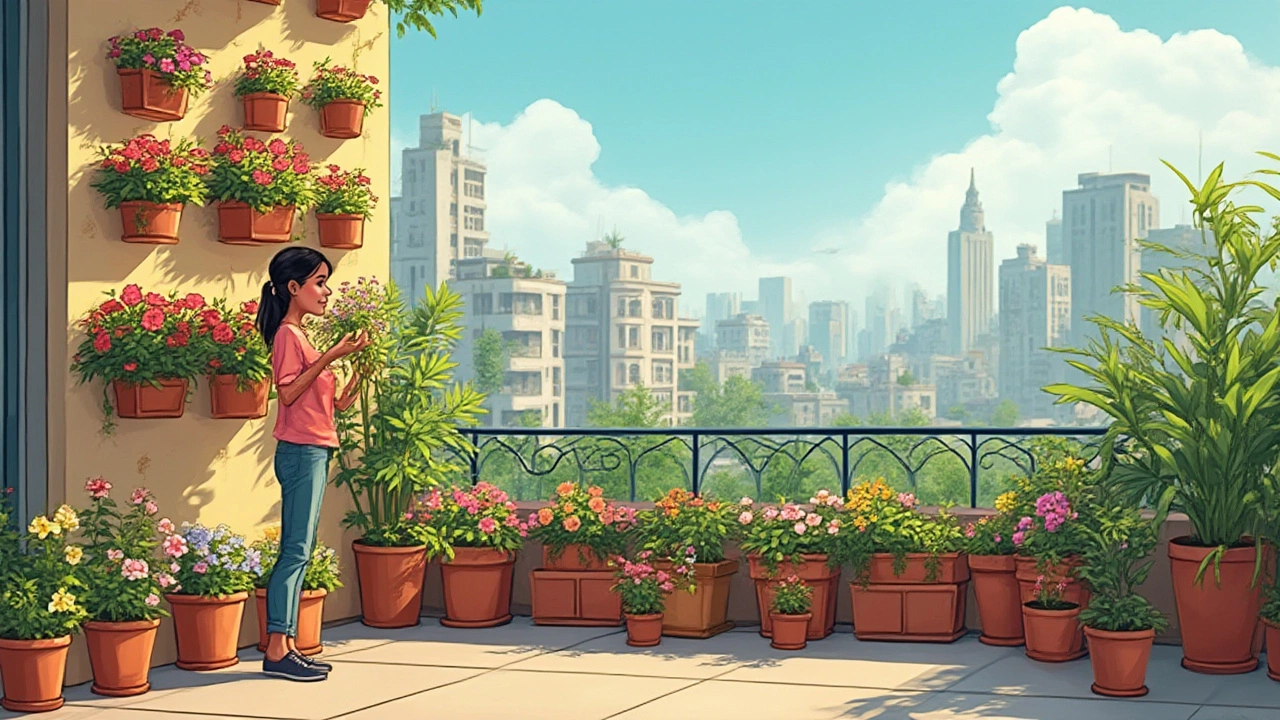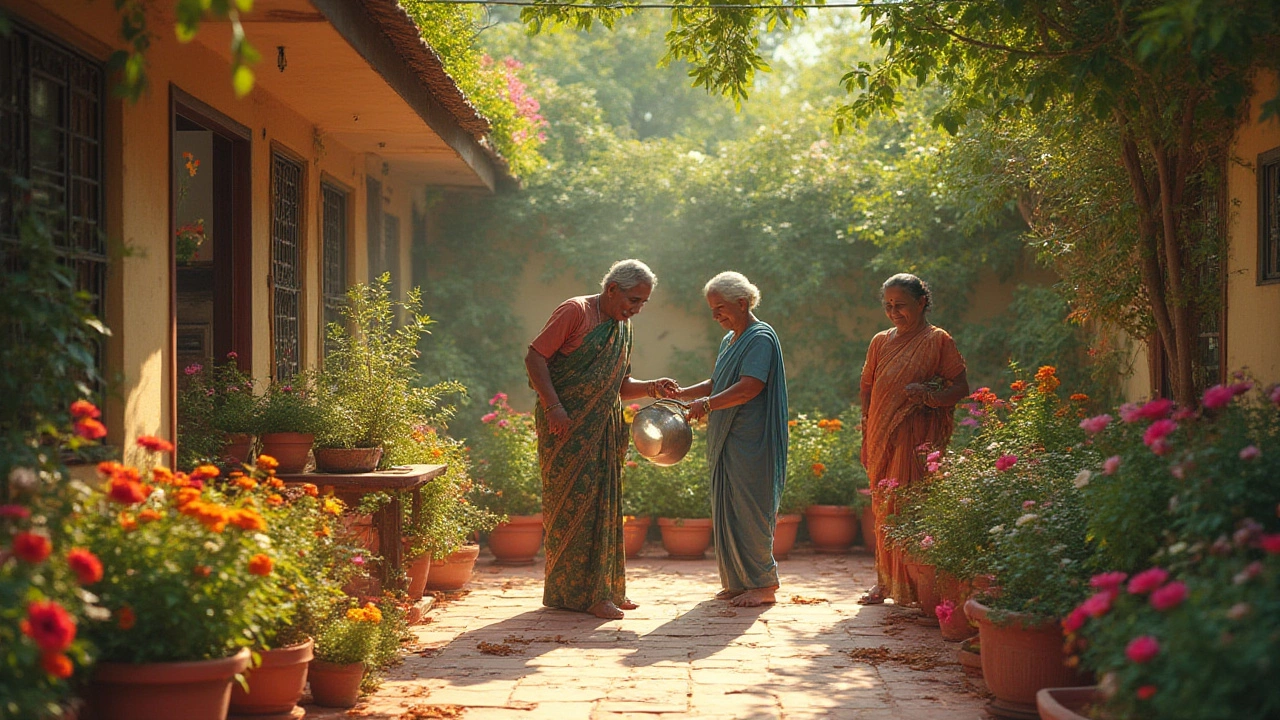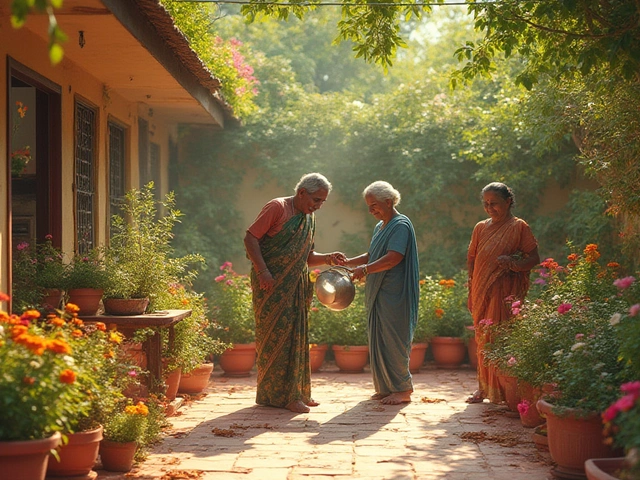If you're tired of planting flowers that fizzle out before your summer BBQs or end up looking droopy in August, you're not alone. There’s nothing more disappointing than investing sweat and time into blooms that barely make it past the first heatwave. So, is it really possible to have a flower garden that keeps bursting with color from June to September—without turning your weekends into a chore fest? Absolutely. With a few smart choices, you can pack your beds or containers with tough-as-nails flowers that just keep going (and going). Some of these beauties thrive on neglect, giving you the bragging rights for the prettiest garden on the block, with practically zero fuss.
Flower Champions: Unstoppable Blooms for the Easiest Summer Garden
If you want low-maintenance flowers that bloom all summer, there are several heavy-hitters you can count on—even if your thumb is more brown than green. Perennials like daylilies (Hemerocallis) and coneflowers (Echinacea) are legendary for their resilience. Daylilies aren’t just tough; they’ll actually shrug off drought and ignore most bugs. One established clump can send up bloom after bloom for up to two whole months. Blue, yellow, peach, crimson—there’s something for everyone. Coneflowers, on the other hand, won’t just keep decorating your garden with their daisy-like blooms. They’ll also invite bees and butterflies, and when the blossoms fade, goldfinches go crazy over the seeds. Both plants are practically set-and-forget once rooted in the ground. Most varieties don’t even flinch at sweltering heat or the odd dry spell.
Zinnias deserve a gold star for pure summer stamina. Start them from seed or plug in a six-pack from the garden center, and they’ll bloom constantly until the first frost. Deadheading is helpful but not mandatory. Need more? Black-eyed Susans (Rudbeckia) are foolproof—hardly any pests, and they self-sow if you let a few heads go to seed. Want some drama? Russian Sage (Perovskia atriplicifolia) sends up silvery, lavender-blue spikes that look dreamy rippling in the hot sun, and not even deer want a taste.
Here’s a quick table to help you pick the right contenders for your garden or patio:
| Flower Name | Sun Needs | Color Range | Drought Tolerant? | Avg. Bloom Span |
|---|---|---|---|---|
| Daylily | Full sun/part shade | Wide variety | Yes | 6-8 weeks |
| Coneflower | Full sun | Purple, pink, white, others | Yes | 8+ weeks |
| Zinnia | Full sun | All except blue | Fairly | 10-12 weeks |
| Black-eyed Susan | Full sun | Yellow, gold, orange | Yes | 8-10 weeks |
| Russian Sage | Full sun | Lavender blue | Excellent | 12+ weeks |
Don’t forget about annuals like vinca and marigolds if you want flowers that spell easy. These plants pump out color without pause. Vinca handles heat and humidity, actually thriving when other flowers throw in the towel. Marigolds? They’re tough, compact, and also keep pests away from your veggies. Don’t underestimate smaller but relentless beauties like moss rose (Portulaca), which doesn’t blink at dry spells and keeps cranking out tropical blooms in ground or pots. You really just plant these, water occasionally, and maybe snip off faded flowers every now and then.
Another not-so-obvious choice: coreopsis and gaillardia (blanket flower). Both tolerate poor soil, full sun, and erratic watering. These go wild with yellow, orange, and red blooms and keep at it no matter how muggy summer gets. Shasta daisy is another option for those craving classic cottage charm, and guess what? Modern varieties bloom weeks longer than they used to, all without much maintenance.
The best part about focusing on low-maintenance flowers? You really don’t need to spend on fancy fertilizers or spend hours mulching every month. Once the roots are established, most tolerate a missed watering or two. If you’re in a hotter, southern climate, Mediterranean favorites like lavender and salvia go the distance, loving hot, dry summers (just make sure they have super well-drained soil—think sandy or rocky).
If you’re growing in containers, consider lantana or calibrachoa. Both trail and spill beautifully, keeping color pops on patios or balconies all season long with minimal deadheading. These flowers laugh at heat and attract hummingbirds without making you a slave to your watering can.

Tips, Tricks, and Pitfalls: How to Get the Most From Summer Flowers
Picking the right flowers is just the first step. Even the toughest blooms need a good start. Pay attention to where you plant—almost all the hardiest summer flowers thrive in full sun, which usually means six or more hours of direct light. The number-one rookie mistake? Planting sun-lovers in shade and hoping for magic. They may grow, but blooms will be sparse and sad. Before planting, loosen up the soil and mix in some compost. Even low-maintenance flowers will thank you by rooting faster and blossoming harder.
When you plant, keep spacing in mind. Packing seedlings or transplants too tightly can block airflow, making them more prone to powdery mildew, especially on humid days. Check your seed packet or nursery tag for the recommended distance. Space them out, let them sprawl, and you’ll have fewer issues later.
Mulching isn’t mandatory, but it sure helps by holding in moisture and keeping weeds under control. Organic options like shredded bark or even grass clippings work fine. Aim for a 2-3 inch layer, but keep it a little away from the stems to avoid rot. Even so-called drought-resistant flowers appreciate some extra help when they’re newly planted or when summer throws a record-breaking heatwave your way.
How much do you need to water? Less than you think, once they’re established. Most summer bloomers prefer drying out between sessions. Drip irrigation or soaker hoses can make this a breeze; just set them up, and you’re good. For potted plants, check once a day during peak heat—containers dry out quicker. If leaves start drooping, give them a drink. But if there’s a week of rain, let them dry out for a bit before watering again. Too much water can actually stress the plants more than too little.
Deadheading (removing faded blooms) is the secret for even more flowers on zinnias, petunias, and marigolds, but don’t feel guilty if you skip this step. Many newer varieties bloom so prolifically that they practically deadhead themselves. Of course, if you’re aiming for a tidy look or want nonstop color, snipping off spent flowers during evening strolls pays off big time.
Pests tend to avoid most of these rugged flowers, but sometimes aphids or Japanese beetles show up. Blast aphids with a hose or pinch off damaged leaves. For beetles, just drop them into a jar of soapy water. Companion planting can help too—marigolds near your vegetables deter unwanted bugs, while nasturtiums draw aphids away from your prize flowers.
Don’t forget that even the hardest working plants need a little love in the form of occasional feeding. Every few weeks, sprinkle an all-purpose organic fertilizer or add some compost around the roots. You’ll often get richer a color or longer bloom times in return, but don’t go overboard—these aren’t needy roses.
If you live somewhere with brutal summers, consider creating water-wise beds for the toughest performers, grouping drought-tolerant picks together. This method, called “hydrozoning,” saves water and energy—perfect if you want to avoid dragging hoses around. And if you have a brown-thumb past? Start small! Try a few zinnias or vinca in containers, then branch out. Building confidence, plus a long stretch of blooms, is much more satisfying than wrestling with fussy, high-maintenance plants.
For those with shadier yards, don’t worry—bluebells, impatiens, torenia, and begonias can deliver continuous summer color in lower-light spots, though they’ll need a bit more regular watering and protection from slugs or snails.
Want flowers that do more than just look good? Black-eyed Susan, coneflower, and coreopsis provide seeds for birds at season’s end, meaning your garden stays busy with wildlife even after peak bloom fades. Plus, letting a few flower heads go to seed makes replanting even easier next spring.

Smart Ways to Combine Flowers for Months of Color Without the Stress
You don’t need a master plan or a fancy design to keep summer flowers shining. Just combine a mix of bloomers with overlapping bloom times and a range of heights, colors, and textures. For example, pair tall Russian Sage at the back of a border, mid-height coneflowers and coreopsis in the middle, and zinnias or vinca across the front for nonstop color. Add in a few annuals (like marigolds or petunias) for those eye-popping shades traditional perennials sometimes can’t match.
If you’re working with containers, mix thrillers, fillers, and spillers. Marigold or dwarf cosmos at the center (the thrillers), with calibrachoa or vinca to fill out the sides, and moss rose or creeping Jenny cascading over the edge for the spiller effect. This combo doesn’t just look good. It also means at least one part will be in peak bloom no matter what summer throws at you.
Try clustering plants in odd numbers and groups for a natural look. Three or five plants grouped together create a much bolder splash of color and are easier to care for than dozens of scattered single blooms. Want to keep things super low key? Stick with one type in a larger swath—think a long row of black-eyed Susans or a bed of daylilies. Maintenance is easier this way and pests are less likely to jump from plant to plant.
When space is tight, like on a balcony or patio, vertical planters stuffed with zinnias or nasturtium let you enjoy pockets of color. Small-space gardeners can even mimic a cottage garden look by pairing cosmos, sunflowers, and snapdragons in bigger pots with high-quality potting soil and a dash of slow-release fertilizer.
Let’s talk color. Go bold, go bright, or try calming combos. Yellow and orange marigolds mix well with purple salvia and blue ageratum. Pink coneflowers and white shasta daisies bring out that storybook charm. If you want low-effort drama, stick with monochrome groupings—nothing looks more professional than a mass of deep pink zinnias or a sunlit stand of golden rudbeckia.
If you want flowers to do double duty, plant edible nasturtiums or calendula. These give you blooms and petals for salads! Pollinator-friendly picks like bee balm and cosmos are not only beautiful but also help your tomatoes and peppers set more fruit, thanks to happy bees buzzing around.
Once you get the mix right, these low-maintenance summer bloomers leave you with more time to actually enjoy your space, take in the butterflies, and savor lazy evenings outside. Minimal effort, maximum reward—and flowers that flatten even the harshest summer sun, every single year.


